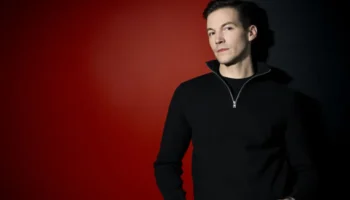The eighth esctoday.com TOP TEN list starts today with the places 5 and 4 being announced. As announced on Saturday, this week's topic are the TOP TEN most crazy national final formats.
National final formats that met one or more of the following criteria were considered:
- strange/complicated/unsual voting system
- overly lengthy process/unusual selection of finalists
- high effort turns out to be needless
This list is about formats, so strange/unexpected results and bizarre entries, performances and presentations are not considered.
So we continue…
No. 5 – Eurovision sarki yarismasi 1975
Turkey had its debut in the Eurovision Song Contest in 1975 and for the national final, the broadcaster chose a voting system that would make sure that no one would be able to be made responsible for the result afterwards…
The national selection already started two months before the actual national final with preview videos shown on Turkish television. The 15 acts then performed one song each in the national final and a postcard voting an jury voting were held. However, at the end of the show, no winner was announced. Although there was supposedly no tie, the top six were announced as two first places, two second places and two third places. The two winning singers could choose between two envelopes and one of them included the message that the performer's song would represent Turkey in Stockholm. It is probably the only national final ever whose concept intended for leaving the eventual choice to a draw.
This national final concept was no success for Turkey: Semiha Yanki finished last in Stockholm with Seninle bir dakika getting only three points in total. Turkey was therefore the fifth debuting country to finish last following Austria (1957), Monaco (1959), Portugal (1964) and Malta (1971). However, the song was a hit in Turkey.
The other winning song, Delisin by Cici Kizlar:
http://www.youtube.com/watch?v=3OnqQrQLHp8
No. 4 – Nationaal Songfestival 2010
The Dutch national final 2010 was probably never supposed to be taken too seriously. The voting system used turned out to be not very useful and in the end, we could enjoy one of the most bizarre (and yet most entertaining) votings in the history of the Eurovision Song Contest…
Pierre Kartner was chosen internally to write the Dutch entry for the Eurovision Song Contest. In December 2009, his own demo version of Ik ben verliefd, sha la lie premiered on radio. In the national final, five acts performed different versions of the song and the voting system was kept so simple that it was meant to result in a tie: Only five points were given out in total, one by each of the four jury members and a fifth one by the studio audience. Two acts got two points each and therefore, composer Pierre Kartner was supposed to choose the Dutch representative for Oslo, which made the whole voting rather useless after all as it only narrowed the top five down to a top two. The composer refused to vote and wanted to flip a coin but eventually did give his vote to Sieneke.
The national final was no major success for the Netherlands, as Sieneke finished 14th in the second semi final thus not qualifying for the final. However, she finished eleventh in the televoting, which would have been the country's best result in a semi final since 2004. Ik ben verliefd, sha la lie was also the first Dutch entry, that was a number one hit on homeground.
Runner-ups Loekz:
Tomorrow, we will introduce no. 3 and 2 on the list.



